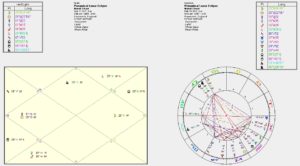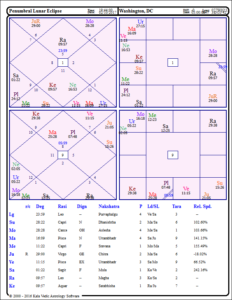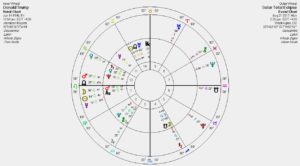We are in the waxing Moon phase now, and light is increasing as we move toward the full Moon on February 10, 2017. This Moon will also be a very subtle lunar eclipse (penumbral or appulse).

 According to Earthsky.org “The ideal spot to watch this penumbral eclipse is from Europe, Africa, Greenland and Iceland. From there the whole eclipse can be seen, from start to finish, and it occurs at late night in a dark sky. In Asia, the eclipse will be obscured by morning twilight on February 11 and will be in eclipse at moonset (sunrise) February 11.
According to Earthsky.org “The ideal spot to watch this penumbral eclipse is from Europe, Africa, Greenland and Iceland. From there the whole eclipse can be seen, from start to finish, and it occurs at late night in a dark sky. In Asia, the eclipse will be obscured by morning twilight on February 11 and will be in eclipse at moonset (sunrise) February 11.
 Although the whole eclipse, from start to finish, lasts for some four and one-third hours, the beginning and ending stages are not visible to the eye. Given a dark sky, free of twilight glare, the eclipse might be visible to the eye for an hour or two, centered on the greatest eclipse (February 11 at 00:44 UTC). At North American time zones, that means the greatest eclipse will happen on February 10, at 8:44 p.m. AST, 7:44 p.m. EST, 6:44 p.m. CST, 5:44 p.m. MST, 4:44 p.m. PST and 3:44 p.m. AKST.”
Although the whole eclipse, from start to finish, lasts for some four and one-third hours, the beginning and ending stages are not visible to the eye. Given a dark sky, free of twilight glare, the eclipse might be visible to the eye for an hour or two, centered on the greatest eclipse (February 11 at 00:44 UTC). At North American time zones, that means the greatest eclipse will happen on February 10, at 8:44 p.m. AST, 7:44 p.m. EST, 6:44 p.m. CST, 5:44 p.m. MST, 4:44 p.m. PST and 3:44 p.m. AKST.”
 In an appulse/penumbral lunar eclipse, the Moon moves through only the Earth’s penumbra and is only slightly dimmed. Please refer to Timeanddate.com for more information about your local eclipse times and visibility. Regarding the matter of visibility, Vedic astrology suggests not looking at an eclipse but instead, staying inside and going within, as all spiritual practices performed during any kind of eclipse are greatly enhanced no matter where it is visible on Earth.
In an appulse/penumbral lunar eclipse, the Moon moves through only the Earth’s penumbra and is only slightly dimmed. Please refer to Timeanddate.com for more information about your local eclipse times and visibility. Regarding the matter of visibility, Vedic astrology suggests not looking at an eclipse but instead, staying inside and going within, as all spiritual practices performed during any kind of eclipse are greatly enhanced no matter where it is visible on Earth.
 Two weeks after this lunar eclipse on February 26, we will have a solar annular eclipse in sidereal Aquarius, and I will write more about this one at a later date. For now, I will say that solar eclipses generally tend to carry more weight than lunar eclipses, but both can be good for deepening spiritual practice and awareness. In addition, solar or lunar eclipses closely conjoining or aspecting a natal planet or chart point reflect significant changes, the nature of which will depend on the significations of that planet or point, as well as all the other aspects, yogas, and dasas in place.
Two weeks after this lunar eclipse on February 26, we will have a solar annular eclipse in sidereal Aquarius, and I will write more about this one at a later date. For now, I will say that solar eclipses generally tend to carry more weight than lunar eclipses, but both can be good for deepening spiritual practice and awareness. In addition, solar or lunar eclipses closely conjoining or aspecting a natal planet or chart point reflect significant changes, the nature of which will depend on the significations of that planet or point, as well as all the other aspects, yogas, and dasas in place.
A lunar eclipse often churns up dramatic events, including weather, seismic or geopolitical events; as well as stirring up emotional intensity and relationship or emotional issues that need to be brought out in the open for understanding and healing. Often, secrets are revealed around either a solar or lunar eclipse. When triggering a natal planet or chart point (like the lagna/ascendant), a lunar eclipse may bring with it a culmination related to the nature of the planet or chart point, whereas a solar eclipse will often bring a new beginning.
This month’s penumbral eclipse will begin on February 10, 2017 at 22:34 UTC; maximum eclipse will be at 00:44 UTC on February 11; and it will end at 2:53 AM on February 11. A few days on either side of a lunar eclipse can be energetically unstable. These days, known as the “shadow of the eclipse,” are not recommended for initiating important actions or deciding important issues.
The luminaries determine the timing of the eclipse (when they are exactly conjunct or opposite), whereas the node marks the zodiac point of the eclipse that will be most activated. I find that either the zodiac position of the node or the luminary (Sun/solar eclipse or Moon/lunar eclipse) at maximum eclipse can become a “critical degree” afterward. It is not often that the exact day, week, or month of the eclipse will mark an abrupt change. Rather, transits of planets to the eclipse points, before or after the eclipse, will usually act as triggers. Quite often, the changes indicated by an eclipse are gradual, occurring more slowly over a period of time.
Some astrologers say the eclipse degrees are critical for two weeks after the lunar eclipse and six months or even a year or more after the solar. We also hear that the duration of the effects of an eclipse will be a year for every hour the Sun is eclipsed, and a month for every hour the Moon is eclipsed, in which case this time of the lunar eclipse, it will be a little over a month, taking into account the relatively short partial eclipse timing.
Eclipses are all about personal growth. This February’s lunar eclipse will involve the Moon’s North Node Rahu, indicating that some of us will come to a possible realization or conclusion around this time. Perhaps we already have done so recently, or will in the coming month, again depending on how and where the eclipse activates a natal or mundane horoscope. Even though positive, the change of an eclipse can feel overwhelming at first.
Many astrologers read this lunar eclipse as a Cancer/Ashlesha eclipse as the Moon is at 28 degrees sidereal Cancer. This degree of the Moon falls in the disruptive nakshatra gandanta (karmic knot) of Ashlesha. This nakshatra is often associated with moral deception, sensual entanglements, and real or metaphoric poisons. The eclipsed Moon falls in the eighth house of the US Kelleher chart, indicating the possibility of a major sex scandal or scandals erupting around this time and in the coming month, such as the massive pedophile ring that was just busted in Los Angeles a few days ago. There are VIPs in high positions of public office in Washington who are rumored to be involved in pedophile sex rings, whose charts will be triggered by this eclipse, so we shall see. Eclipses do unveil the sordid truth sometimes.
Using the degree of the Moon in a lunar eclipses is a fine technique, but I also am drawn to calculate and focus on the midpoint between the Moon and Rahu. With the Moon at 28 Cancer, and Rahu at ~10 degrees Leo (using mean nodes), the midpoint will be about 4 degrees of Leo in Magha nakshatra. This suggests a focus on creativity, health and vitality; matters of the heart; business or career development; self-promotion, and the need to overcome self-doubt and build inner strength. Issues will continue to erupt around those in the entertainment industry, and also, issues with animal companions might take center stage for some (as ruled by Leo). Magha nakshatra relates to power and leaders/leadership. The 4 degree Leo midpoint falls in the second pada of Taurus navamsa, which further signifies image, duty, and ambition.
 Vedic astrologer Prash Trivedi in his 27 Celestial Portals says this about the Taurus navamsa of Magha nakshatra: “After the throning, the king has to consolidate his position.” In other words, this section relates to strengthening one’s newly attained position and the power struggles that ensue in the process. In America, we look at President Trump’s natal horoscope to understand the US collective karma, and see that in his natal horoscope, Mars in his ascendant will be eclipsed by Rahu in the February lunar eclipse, and again by Rahu in next August’s solar eclipse. Mars and ascendant eclipses represent conflict, upheaval, and rebirth. The Washington lunar eclipse chart has Leo rising as does President Trump’s natal chart, which is further confirmation of these themes.
Vedic astrologer Prash Trivedi in his 27 Celestial Portals says this about the Taurus navamsa of Magha nakshatra: “After the throning, the king has to consolidate his position.” In other words, this section relates to strengthening one’s newly attained position and the power struggles that ensue in the process. In America, we look at President Trump’s natal horoscope to understand the US collective karma, and see that in his natal horoscope, Mars in his ascendant will be eclipsed by Rahu in the February lunar eclipse, and again by Rahu in next August’s solar eclipse. Mars and ascendant eclipses represent conflict, upheaval, and rebirth. The Washington lunar eclipse chart has Leo rising as does President Trump’s natal chart, which is further confirmation of these themes.


 The periodicity and recurrence of eclipses is governed by the Saros cycle, a period of approximately 6,585.3 days (18 years 11 days 8 hours). This was known to the Chaldeans as a period when lunar eclipses seem to repeat themselves, but the cycle is applicable to solar eclipses as well. Eclipses come in families that are designated by their “Saros Number.” These families link together the eclipses that happen every ~18 years. These families evolve over cycles that last many centuries (10-15), comprising 80 eclipses in a series.
The periodicity and recurrence of eclipses is governed by the Saros cycle, a period of approximately 6,585.3 days (18 years 11 days 8 hours). This was known to the Chaldeans as a period when lunar eclipses seem to repeat themselves, but the cycle is applicable to solar eclipses as well. Eclipses come in families that are designated by their “Saros Number.” These families link together the eclipses that happen every ~18 years. These families evolve over cycles that last many centuries (10-15), comprising 80 eclipses in a series.
Astrologer Bernadette Brady has written extensively about her research on Saros Cycles in Predictive Astrology: The Eagle and The Lark, and she tracks the theme of each cycle based on the horoscope for the inception eclipse. The February lunar eclipse is Saros 114 and occurred the last time on January 31, 1999 and before that, January 20, 1981. You might look back to see if you went through any significant changes around these eclipses.
Saros 114 was born on January 4, 1639, which Brady describes as: “Unusual events involving friends or groups place a great deal of pressure on relationships. These relationship issues may loom large as the eclipse affects the chart. The individual would be wise not to make any hasty decisions since information is distorted and possibly false. This eclipse has the essence of tiredness or health problems attached to it” (S.S. 1 North, p. 308). Again, we would need to analyze the natal horoscope to see if this is specifically indicated for any individual or mundane horoscope.

